Recommended Bariatric Equipment for Hospitals
The need for bariatric equipment and provisions in hospitals all over the UK is growing year on year. The NHS have reported there were one million admissions alone to hospitals in 2019/20 where obesity was a factor.
Furthermore, the Health Survey for England, produced by NHS Digital, found that nearly 26% of all adults in England are classed as obese.
With that in mind, it’s important that hospitals adapt to be able to facilitate plus-sized patients; whether it’s the design of the building itself or the bariatric equipment they are investing in.
To ensure there is the right type of bariatric equipment for hospitals, we’ve put together a couple of tips to follow.
What does bariatric mean? Who counts as bariatric?
The term bariatric derives from the Greek word ‘baros’, meaning weight. In healthcare, bariatric refers to the treatment of people who are overweight.
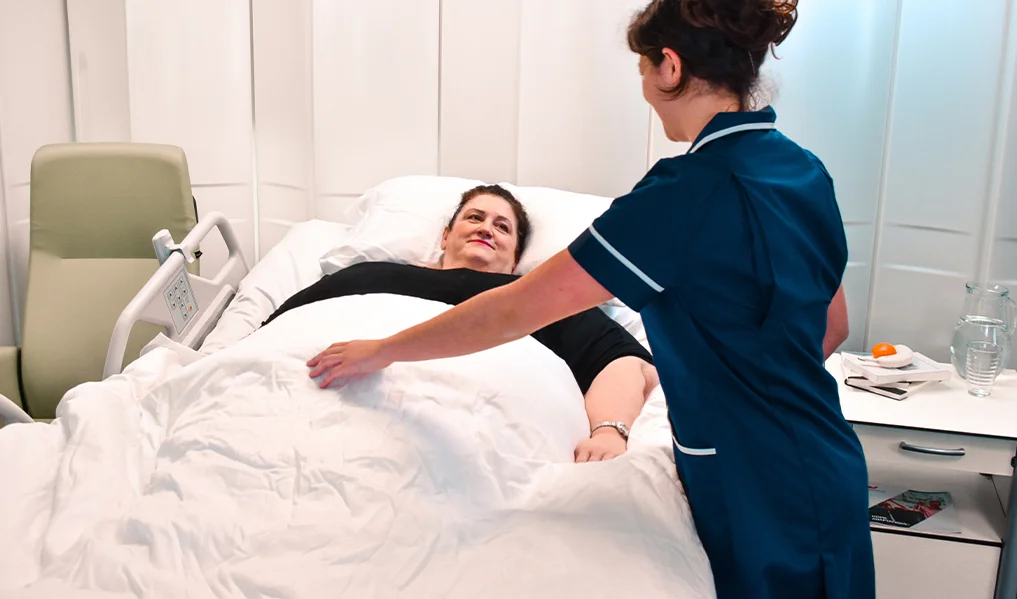
There’s no official weight limit to be described as bariatric or plus size, but any bariatric equipment needs to be able to hold weight anywhere between 270kg all the way up to 500kg.
How to layout a bariatric room
If you’re designing a bariatric care facility or hospital ward and are needing to find out how to make it more accessible for plus-sized patients, then there are a few things to consider.
First and foremost, everything needs to be bigger. The room, the doorways, and even the corridor need to be bigger to allow the patient to move or be transferred with enough space on either side for caregivers to assist.
When it comes to doorways for bariatric patients, we always recommend putting in a double-door; the patient can them move through the middle of the doors again with space either side for carers to help.
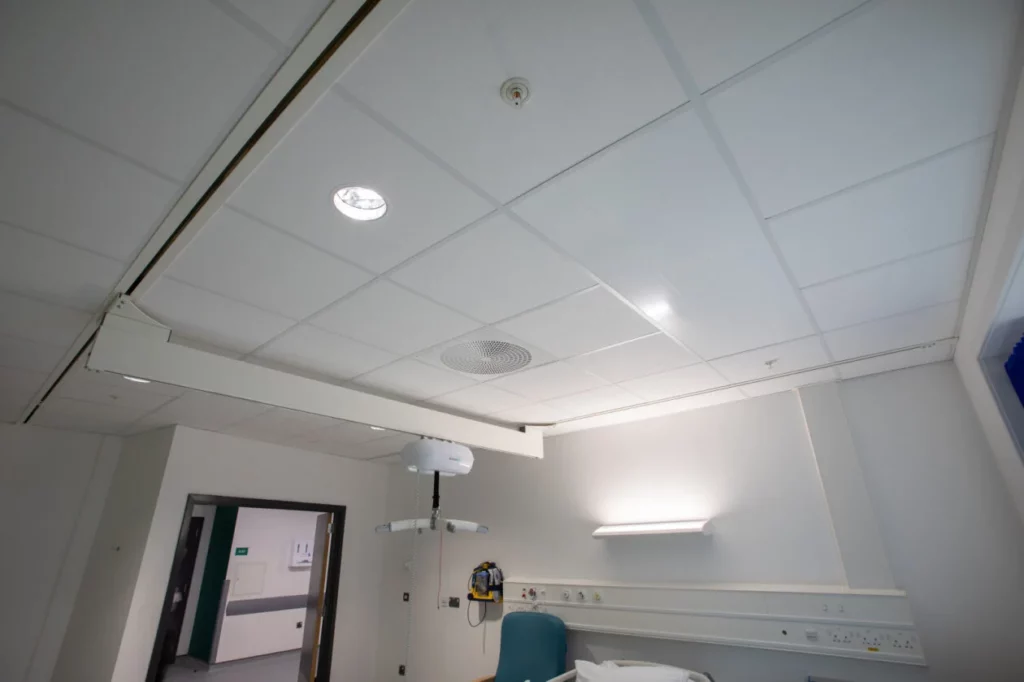
Always make sure you have double-doors in doorways to ensure easy access for bariatric patients and bariatric equipment for hospitals.
Considering the actual structure of the building, you need to ensure that the floor is strong enough to hold the weight of the patient and the equipment with ease. We also highly recommend that you make sure the equipment fits into the room before hiring or purchasing it!
Bariatric ceiling hoist systems
Hospitals may also want to take extra steps to ensure that their ceiling track hoist systems are capable of lifting plus size users. This will usually mean adjusting the fixtures and the weight limit of the track to ensure that the system is a reliable piece of bariatric equipment.
One thing we always recommend when specifying overhead hoist systems for bariatric users is future-proofed tracking. This means that we will install tracking that can take up to 500kg of weight, even if the hoist unit only has a limit of 260kg .
Conveniently, we supply hoist units with a 500kg weight limit) in the form of the AirRise 500.
This gives hospitals the freedom to switch up to a bigger hoist unit for a plus size patient, without having to switch the entire hoist system.
For more information on overhead hoist layouts, take a look at this post.
Any decent overhead hoist system should also be structurally sound to lift bariatric weights. For us, this means installing the track fixings closer together for extra sturdiness.
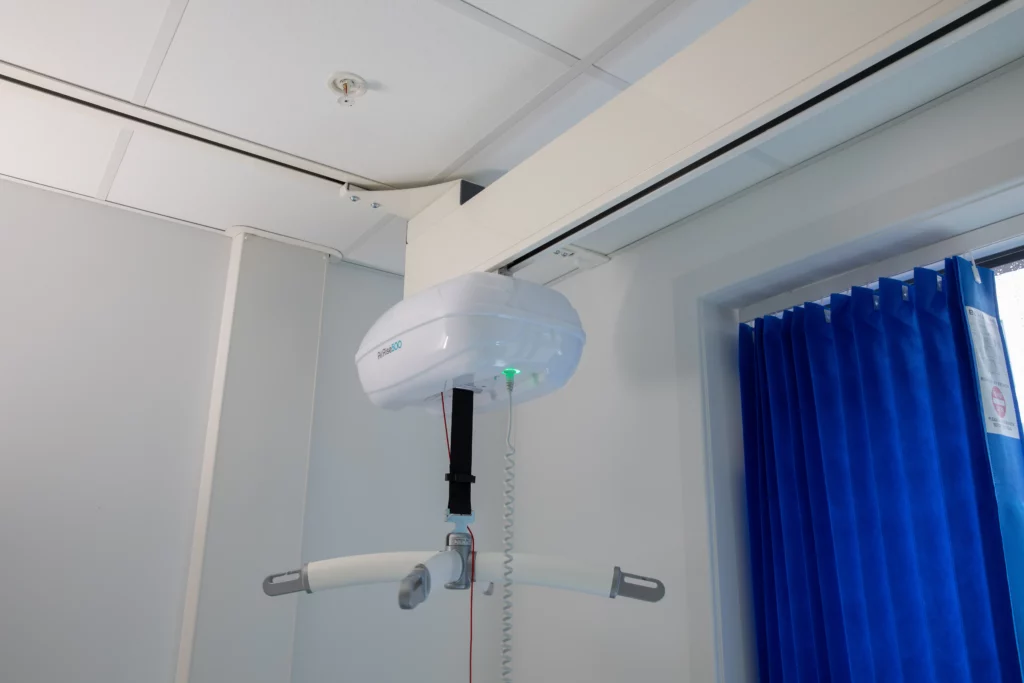
To get more information on how to ensure you have the right overhead hoist system and layout, check out this blog post.
Bariatric hospital beds
Bariatric equipment (including hospital beds) often contain a few different features to facilitate the user’s varying needs. Firstly, plus-sized beds are usually bigger to accommodate the patient’s weight.
Whereas a typical hospital bed may be around 95cm-100cm, a bariatric bed can be made to widths of 110cm and 120cm. This gives a bit of flexibility for the person’s physical size.
It’s also worth noting that when looking at bariatric hospital beds, there’s a difference between the safe working load and the maximum user weight. The safe working load is often higher as it accounts for the mattress, and any other equipment used on the bed along with the patient.
The maximum user weight refers only to the patient’s weight — so please don’t put a 250kg patient on a bed with a safe working load of 250kg because they’ll be too heavy!
The frame of the bed itself will often be made from stronger components to facilitate the person’s weight, and any decent bariatric bed will include split siderails. This allows the siderails to move independently with the head-end and foot-end of the bed so that when the user is sat up, the siderail will still be alongside them offering support and security.
Versatech 1100 ULB Bariatric Bed
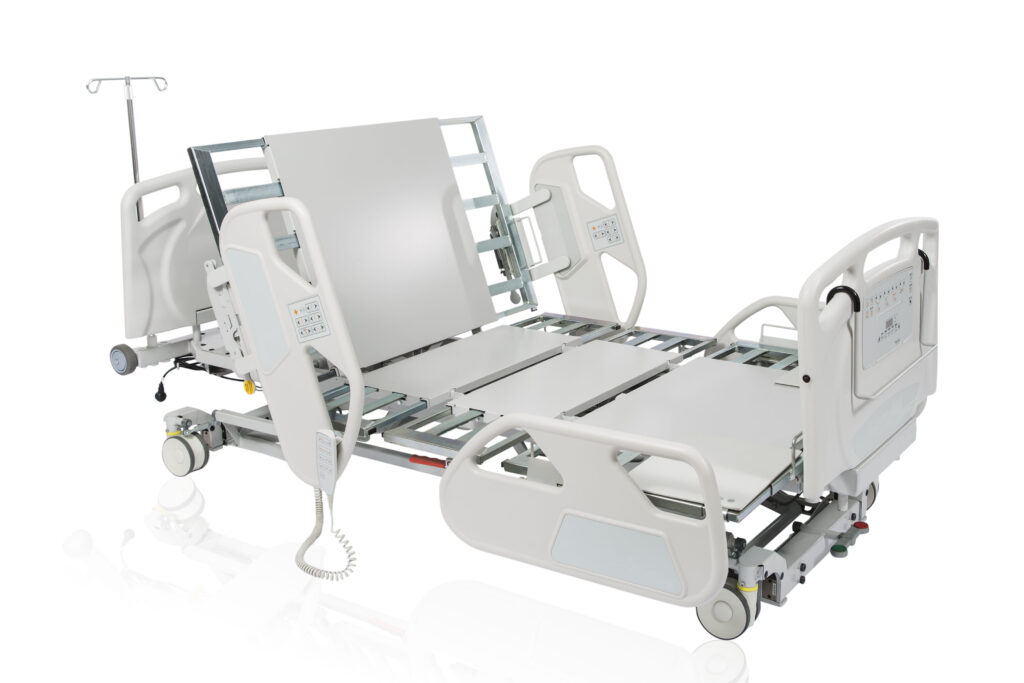
VersaTech 1100 ULB Bariatric Bed
Bariatric medical beds often tend to be lower in height due to the fact that plus-sized patients usually have extra flesh on the underside of their thighs which requires a lower mattress platform for comfort. This also makes it easier for the individual to climb on to and off of the bed and it’s closer to the floor.
Similarly, the low height is helpful for transfers by hoisting. Most bariatric hospital beds will have electric height adjustment to help with this.
The VersaTech 1100 ULB Bariatric Bed is market-leading in this aspect.
As the only bariatric care bed with a safe working load of 500kg, whilst remaining just 21 centimeters from the ground, the VersaTech can make a huge difference to patient independence and fall prevention.
Not only does it benefit patients with its low height, it also includes an innovative feature that ensures greater safety for staff. The VersaDrive is a motorised assistance system that enables patients to be easily moved with one push of a button, reducing the risk of strain injuries to staff.
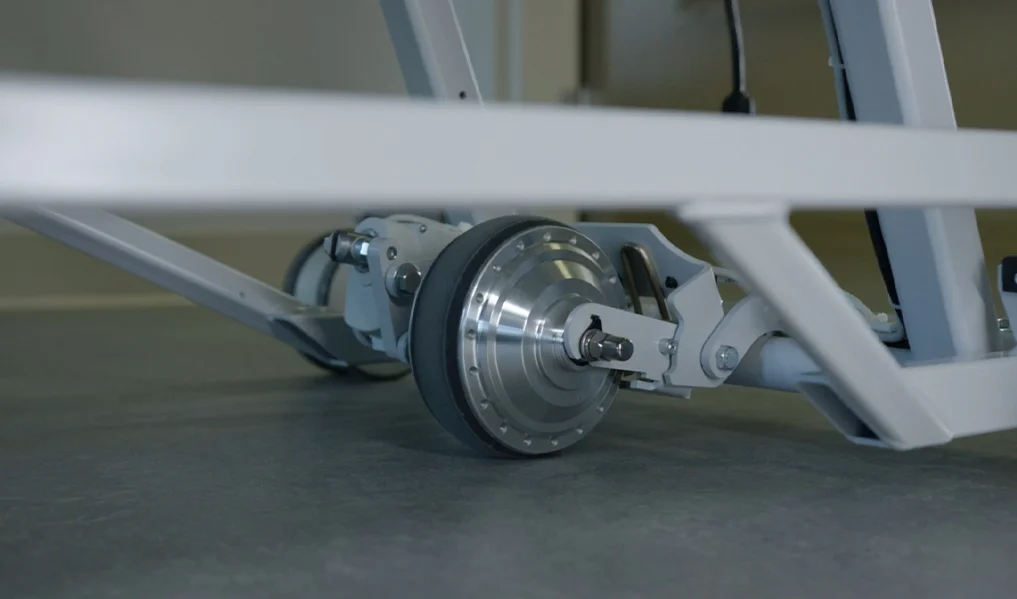
VersaTech 1100 ULB VersaDrive helping reduce strain injuries for caregivers
Read more about how the VersaTech is enhancing bariatric care in hospitals in our blog ‘What is a Bariatric Bed’.
Tips on bariatric equipment for hospitals
We’ve so far taken a look at the types of hoisting and beds a hospital needs to support plus-sized patients.
Now we’ll take at some of the other considerations that can make a big difference to the quality of care provided to bariatric patients.
One of these is the actual positioning of a care bed.
Bariatric hospital beds should include double auto-regression; this means that when the backrest and knee brake are inclined, the middle section of the bed widens to facilitate the patient’s shift in weight distribution.
A plus-sized hospital bed should also be fitted with larger castors and an easy release brake in case of emergencies. This will make it easier for caregivers to simply wheel the patient out of the room to a safe place.
It’s also advised to include a built-in weigh scale in the bed itself, which will monitor the individual’s weight with ease and dignity.
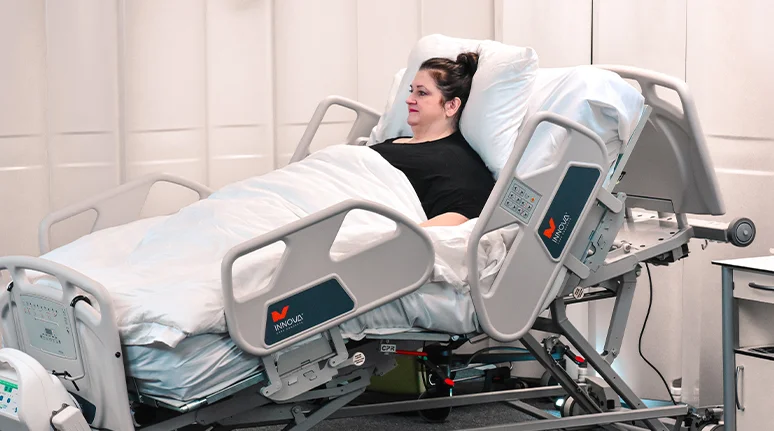
It is important to ensure bariatric beds have features such as larger castors, built-in weigh scale and an easy release brake in case of emergencies.
Bariatric mattresses are also available, but please make sure that they comply with mattress regulations regarding the height, width, and safe working load. The user will either need a foam mattress, or a full air system if they are more at risk (which is often the case with plus size patients).
Summary
In this blog we’ve showcased some of the key considerations for ensuring the right bariatric equipment for hospitals.
Whether it is looking at the must haves for the space available, details on appropriate hoisting systems or the latest innovations in care beds, there is a lot to think about to get bariatric equipment provision right.
To get further support for your care space on bariatric equipment, complete the contact form below to speak to our specialists.
Can we help with anything?
Be sure to use the contact form and reach out to us if you have any questions about the content above.